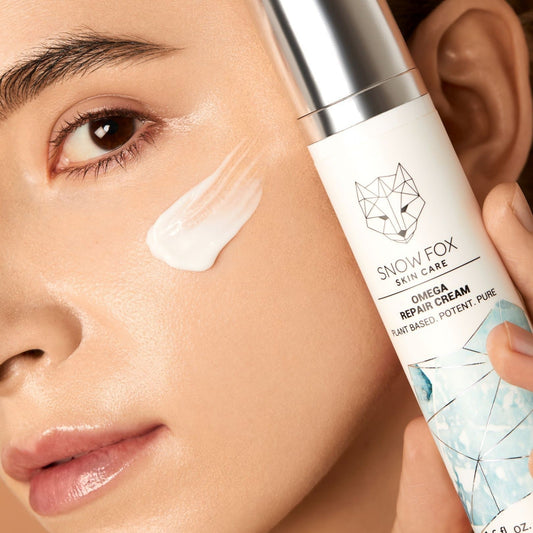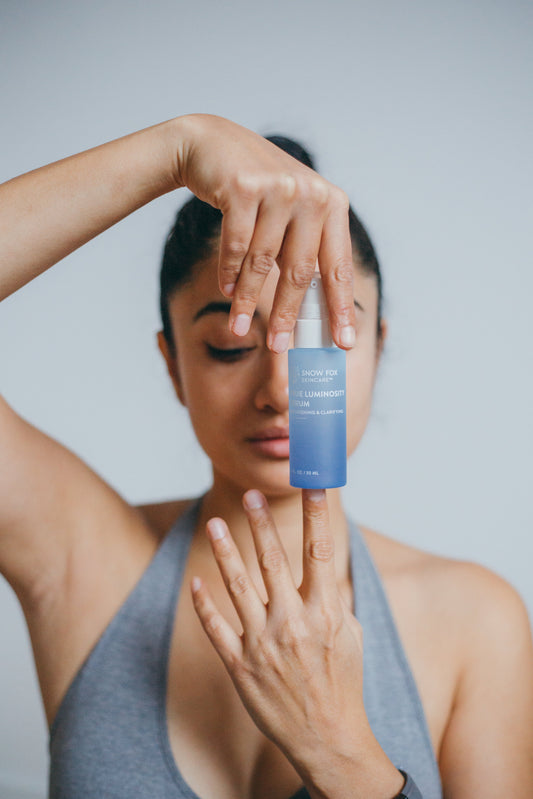For sensitive skin, exfoliation is one of the trickiest skincare steps to get the hang of. Over-exfoliation can damage already fragile skin barriers and make the skin even drier and more sensitive, but not exfoliating at all can cause acne and breakouts. On top of it all, sensitive skin can be unpredictably hyperreactive to different ingredients.
Exfoliation Frequency
Dermatologists recommend exfoliating three times a week for normal to oily skin types, so if you have sensitive skin, clinical advice points to exfoliating once a week on sensitive skin, but ultimately, it depends on how reactive your skin may be as well as the type of exfoliation applied.
The easiest way to measure your suitable exfoliation frequency is checking for dry patches (but oily T-zone), redness, excess sebum, roughness of skin after the treatment. If you have any of these symptoms after, it is recommended to stop and let the skin heal; if not, you are exfoliating “correctly”.
Exfoliation should never leave the skin feeling “raw” or red, swollen or irritated, over more than a few hours. If the redness does not subside quickly, it may be a sign that it is too harsh for your skin.

Choosing the Right Exfoliants
Apart from frequency, it is equally important to find a suitable exfoliant for your skin type in the long run. For sensitive skin, it is best not use physical exfoliants that can be too harsh and abrasive for fragile skin barriers to tolerate. That means scrubs (sugar, salt, beads), vibrating tools with bristles, brushes, face-shaving or self-derma rolling.
Derma rolling on sensitive skin should be done by professionals as they tend to be able to control the treatment pressure if they notice any sign of skin irritation. As for chemical exfoliants, it is important not to use acids that are too concentrated. If your skin is very reactive to any exfoliant, only use them topically on problems areas like the T-zone. Even then, if it feels raw, we suggest you stopping and consulting a dermatologist.
Chemical exfoliants are acids derived from plant or animal sources and include the three hydroxy acids: AHA, BHA, and PHA.
Alpha Hydroxy Acids (AHA)
AHAs stimulate skin cell renewing, smooth the look of roughness, wrinkles and amplified pores. Because AHAs have smaller molecules, they have better penetration and thus, can be more potent. So, the ideal AHA acid for sensitive skin is mandelic acid, which has anti-inflammatory properties.
Common AHAs include Glycolic Acid, Lactic Acid, Mandelic Acid, Tartaric Acid & Citric Acid, with Glycolic Acid being the most powerful.
Beta Hydroxy Acids (BHA)
This type of acid helps to clear the skin by dissolving excess sebum and dead skin cells. BHAs are made up of Salicylic acids (found naturally in white willow trees) that are anti-inflammatory and antibacterial, so they are good at tackling inflamed and acne-prone skin.
For extreme sensitivity conditions like Rosacea and Eczema, BHAs work best as inflammatory diminisher.

Poly Hydroxy Acids (PHA)
The gentlest and most non-irritating acids are PHAs. The main reason is that they have large molecules that make it harder for the acids to penetrate the skin and exfoliate as hard as AHA and BHA do. A special feature of PHAs is that while gently exfoliating, they bind moisture, bring hydration, and act as antioxidants. They are a good choice for those who have sensitive skin and do not want to risk any potential irritation at all.
PHAs are extracted mainly from milk and plants, common acids include: Lactobionic acid, Galactose & Gluconic acid.
Physical Exfoliation for Sensitive Skin
While acids are a great way to keep skin clear, some of us still prefer not to choose chemical exfoliation. This can be due to costs or simply a fear of risking potential over exfoliation or a flare up. The gentlest physical exfoliation available is simple, low risk and very cost effective: textiles.
We recommend our Reusuable Bamboo Make Up Removal Pads, made of bamboo for a daily, gentle exfoliation – you can do this with the Cooling Foam Cleanser or any cleanser, cleansing balm, oil or make up remover you have. To use, simply rub gently for a few extra seconds in circular motions, focusing on areas that you feel need more clarification (just as T-zone, sides of nose, nasolabial folds). Bamboo has very tough tensile strength and harder fibers than cotton, which make for an effective natural exfoliation that is suitable for everyday use. The risk of irritation is minimal.
In Asia, there are microfibre cloths that were designed just for skin exfoliation (usually for the body), but these vary in degrees of hardness so be sure to do a patch test on the body first, before applying to the face.






